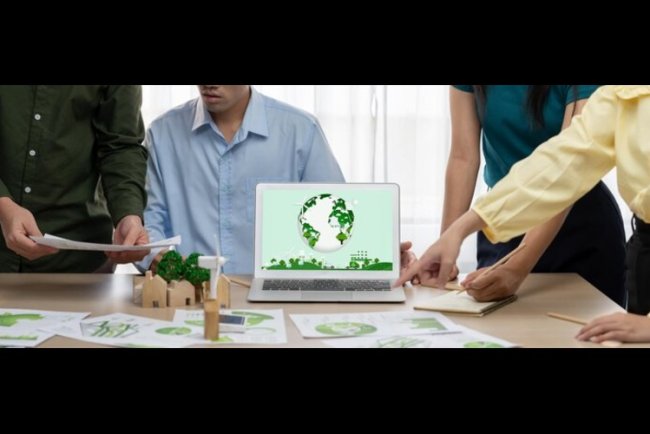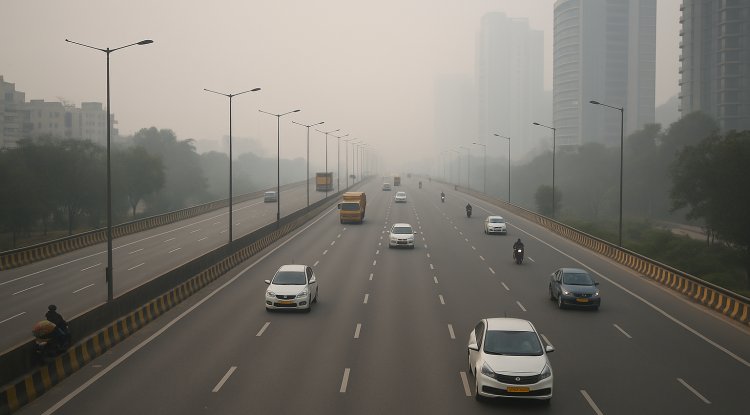DHL Tests EREV Truck With 90% Emission Reduction
DHL’s EREV truck ran 90% electric, cutting CO₂ emissions by over 90% in a 22,000 km trial.

DHL Group has introduced a breakthrough in sustainable transportation with its Extended Range Electric Vehicle (EREV), developed in collaboration with Scania. The new vehicle was tested over a 100-day period between Berlin and Hamburg, traveling nearly 22,000 kilometers. Remarkably, the EREV operated in full electric mode for over 90% of that distance, showcasing its potential as a key component in DHL’s strategy to decarbonize logistics.
Unlike conventional hybrid vehicles, the EREV features a fuel-powered generator that doesn’t drive the wheels directly. Instead, it recharges the vehicle’s battery when needed, ensuring electric-first performance with backup support for extended range and reliability. This innovative approach allows DHL to maintain delivery efficiency even in areas lacking robust charging infrastructure. The generator was used during just 8.1% of the test route, mainly in places where electric charging stations were unavailable, affirming the EREV’s role as a practical solution for long-haul electric trucking rather than a mere concept vehicle.
The environmental benefits of the trial were substantial. DHL reports that the EREV reduced carbon emissions by more than 90% compared to a traditional diesel truck, saving approximately 16 metric tons of CO₂e during the test period. This dramatic reduction highlights the EREV’s potential to contribute meaningfully to the global fight against climate change, particularly within the transport sector—a major source of greenhouse gas emissions.
DHL CEO Tobias Meyer emphasized the need for pragmatic solutions to climate challenges, calling on policymakers to actively support transitional technologies like the EREV. “We want to decarbonize the transport sector now,” Meyer said, “and regulation should not hinder but support us to do so.” His remarks underscore the importance of political will and policy frameworks that enable, rather than delay, sustainable innovation.
The introduction of the EREV complements DHL’s broader efforts in clean transportation. The company is also exploring hydrogen-powered vehicles as part of its commitment to reducing emissions across its supply chain. DHL’s multimodal approach—embracing battery electric, hydrogen, and other green technologies—demonstrates its readiness to invest in scalable, near-term solutions without waiting for perfect conditions or full infrastructure rollouts.
As logistics companies face increasing pressure to cut emissions and adopt greener practices, DHL’s EREV project stands out as a compelling example of how innovation can be deployed quickly and effectively. The trial proved that zero-emission deliveries over long distances are feasible today, with the right technology and strategy in place.
From a technical perspective, the EREV differs significantly from conventional hybrid trucks, which typically rely on a combination of combustion and electric power for propulsion. By using its onboard fuel-powered generator solely to recharge the battery, the EREV maintains its status as a battery-electric vehicle in operation, thereby maximizing electric mileage and minimizing fossil fuel dependence.
The implications of this trial extend beyond DHL’s own fleet. If adopted widely, this type of vehicle could help transform the logistics sector at scale, reducing reliance on diesel and accelerating the shift toward carbon-neutral transport networks. For regions with uneven or developing EV infrastructure, the EREV’s backup generator offers a crucial bridge—supporting electrification without requiring immediate, large-scale investment in charging stations.
DHL’s appeal to regulators and investors is clear: support is essential to bring technologies like the EREV to market faster and more widely. The company argues that transitional solutions are not only viable, but necessary to meet current climate goals while paving the way for even cleaner innovations in the future.
The EREV trial signals a new phase in DHL’s sustainability journey and sets a high benchmark for the industry. With continued investment and policy backing, vehicles like the EREV could soon become a standard feature on roads across Europe and beyond—delivering packages, cutting emissions, and driving logistics into a greener future.
What's Your Reaction?

















